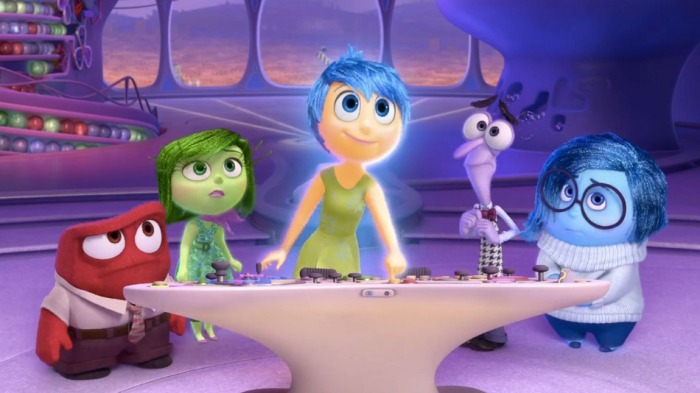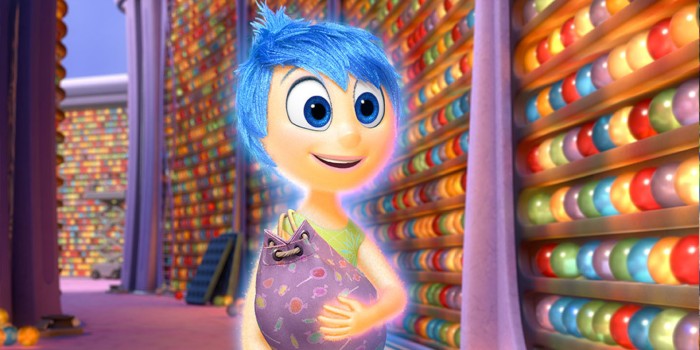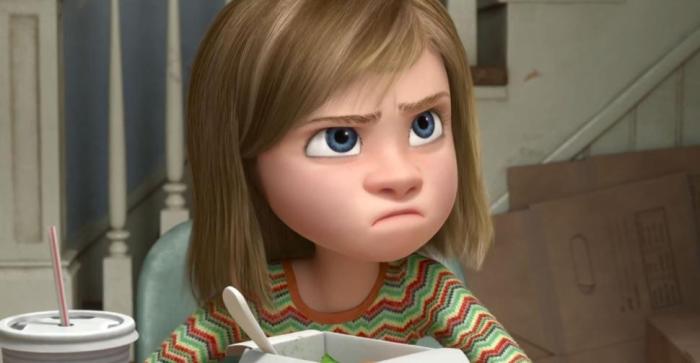Many critics had feared that the middling success of “Cars 2,” “Brave” and “Monsters University” meant that Pixar was experiencing a severe case of writer’s block that might never end. It certainly seemed that the studio’s narrative well might have run dry which could have spelled an end for the high quality of animation that Pixar was famous for. However, “Inside Out” has officially put those fears to bed.
The latest from Pixar, “Inside Out” is a lighthearted comedy-adventure which follows a young girl named Riley as she is uprooted from her comfortable and familiar home in Minnesota and moved to the bustling city of San Francisco. Riley and her family are controlled by their emotions and much of the film takes place inside of Riley’s mind, where each of her emotions is personified by a cartoonish character. There’s Joy (Amy Poehler), Sadness (Phyllis Smith), Fear (Bill Hader), Anger (Lewis Black) and Disgust (Mindy Kaling). These emotions have had an easy job so far as Riley has yet to face many of the hardships of growing up. But, with her recent move to the city and the approach of puberty, Riley’s idyllic life gets shaken up and Joy, who has been the dominant emotion in Riley’s life, finds her leadership challenged by sadness.
The five emotions act essentially as Riley’s inner voices, operating a control panel that, with the push of a button, can decide how Riley feels in any particular moment. The youngster’s memories are represented by glassy spheres that are color coded by the dominant emotion in that memory (yellow colored for Joy, blue for sadness, green for jealousy, red for anger and purple for fear). These memories are treated like files on a computer as they are shipped from one mental location to another through a series of chutes and tubes. Most memories are shuttled off to long term storage at the end of the day while others that are deemed as unnecessary are dumped into an abyss to be forgotten. Formative memories, known as core memories, are kept in the central control room and guarded and treasured by Joy.
This envisioning of the abstract concept of emotions and memories is genius in how it is portrayed; what could have been visually complex is instead handled with precise yet fun and creative ideas by some of the best animators that Pixar studios has to offer. For example, Joy, Sadness and one of Riley’s imaginary friends become trapped in a hallway where Riley’s abstract thoughts reside. They watch in horror as their three dimensional bodies morph into two dimensional shapes and eventually become flat lines. There is some really clever animation used to signify these changes that is reminiscent of the cubist style. Even if the scene is just purely for fun, if you’re tossing around cubism in a kid’s movie than you have earned my respect. The other non-physical aspects of Riley’s mind such as memories, thoughts, nostalgia, dreams and her train of thought, which is symbolized by a literal train, are made very real and central to the conflict. Just watching as Riley’s dreams are created by a film production crew of little workers who use props and special effects to the advantage of making the dream seem realistic, makes me appreciate the thought that went into creating each scene.
An interesting addition to the characteristics of the five emotions, and one that adds many layers to Riley, is that each of them is capable of experiencing a wide array of feelings. This not only represents Riley’s mix of emotions regarding her new surroundings but also highlights the confusion and angst that she is beginning to feel as she nears puberty.
Much of the internal conflict that Joy and her pals experience is directly correlated to how Riley responds to her environment. For instance, when Riley angrily refuses to play along with her father’s childish antics, structures in her mind, affectionately named Goofball Island and Family Island, crumble into the abyss where her inessential memories are dumped. “Inside Out” does a splendid job of illustrating the often unapparent consequences that external trauma can inflict on the mind and psyche.
In fact as the movie progresses, it becomes evident that although everything feels safe and happy when Joy is influencing Riley’s emotions, it is necessary and even beneficial for Sadness, Anger, Disgust and Fear to have a say in some matters. True to life, the movie understands that the influence of negative emotions challenges us, matures us and aids in our self discovery and, in Riley’s case, provides the turning point she needs to embrace her new life and be reconciled with her family.
Pete Docter, who has directed some of Pixar’s most notable entries in the past, returns to man the helm for “Inside Out.” His presence is certainly felt especially in regards to how he handles the contrast between the “real world” and the world of Riley’s mind. The time spent in each world is never too short nor too long and the time outside of the mind is not there only to remind us of its existence but instead always serves a narrative purpose.
“Inside Out” can at times be a heady concept for younger viewers, which certainly isn’t foreign to Pixar’s narrative style. I appreciate the studio’s desire to stretch and challenge younger viewers through their narrative while at the same time managing to still appeal to all maturity levels. Pixar has always created stories that viewers can grow into, that only get better and more relatable with age, and this one is no exception.
My one gripe with “Inside Out” is that, for a movie all about emotion, I didn’t experience the type of emotional connection that I had expected to. It simply didn’t hit me the way that, say, “Toy Story 3” did. But this problem probably lies more with me and my expectations than with anything the film did or could have done because ultimately, “Inside Out” is a magnificent return to form for Pixar. The film dishes out just the right combination of adventure, wit and wisdom to propel the interesting concept and characters towards a thought provoking finale that is sure to leave a good taste in audiences’ mouths.





















